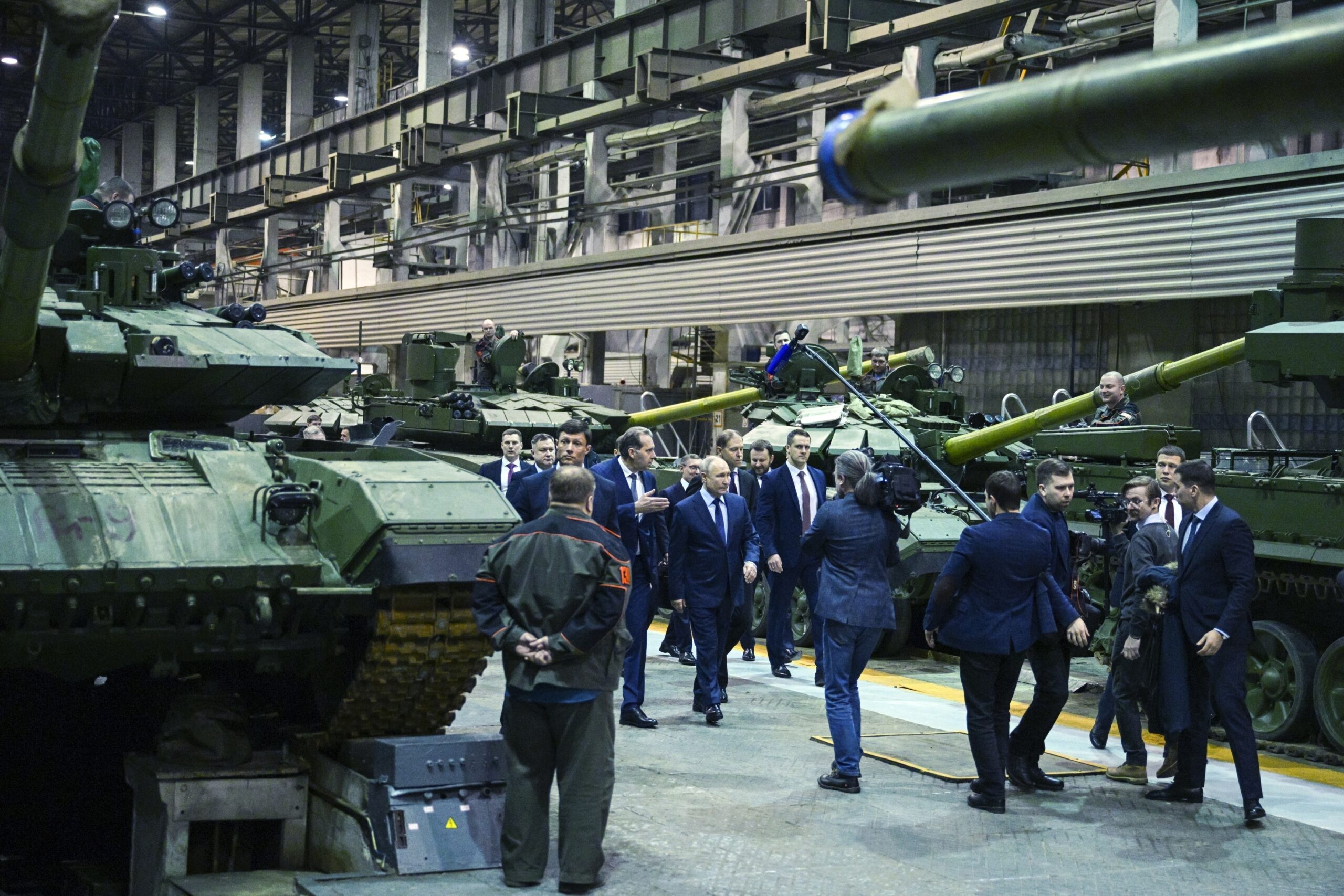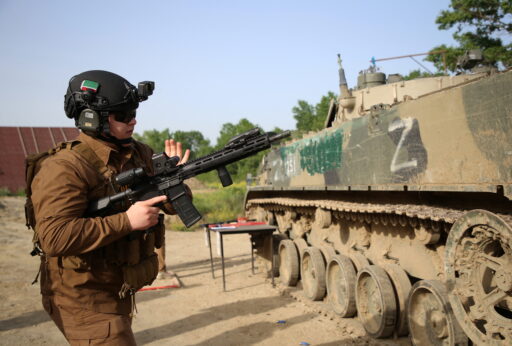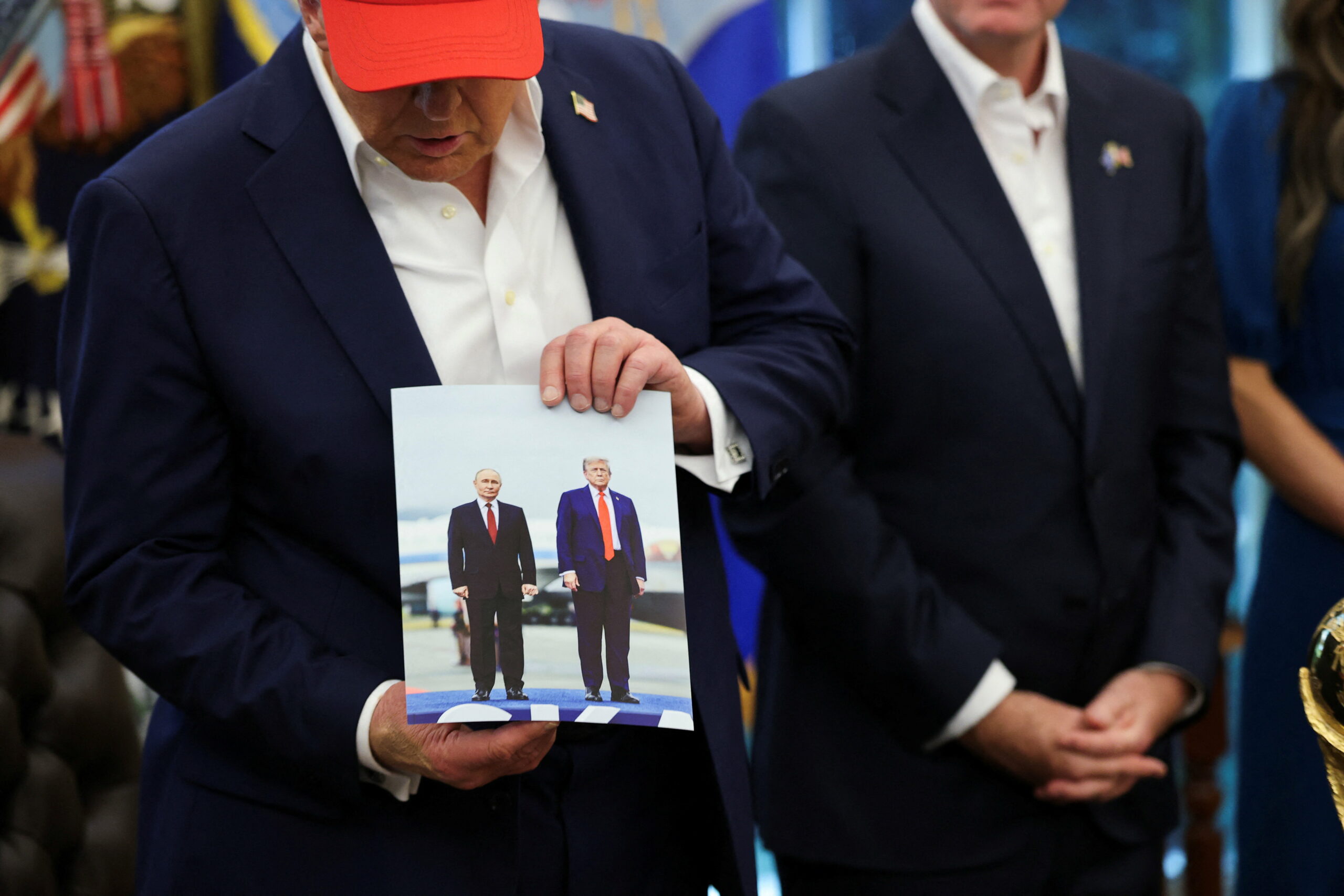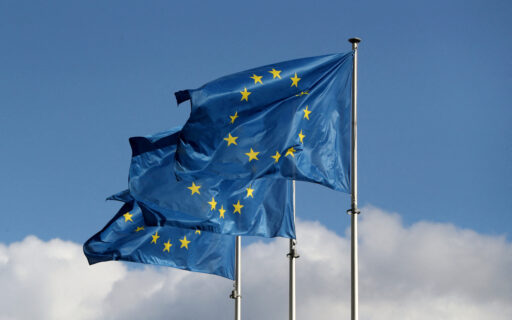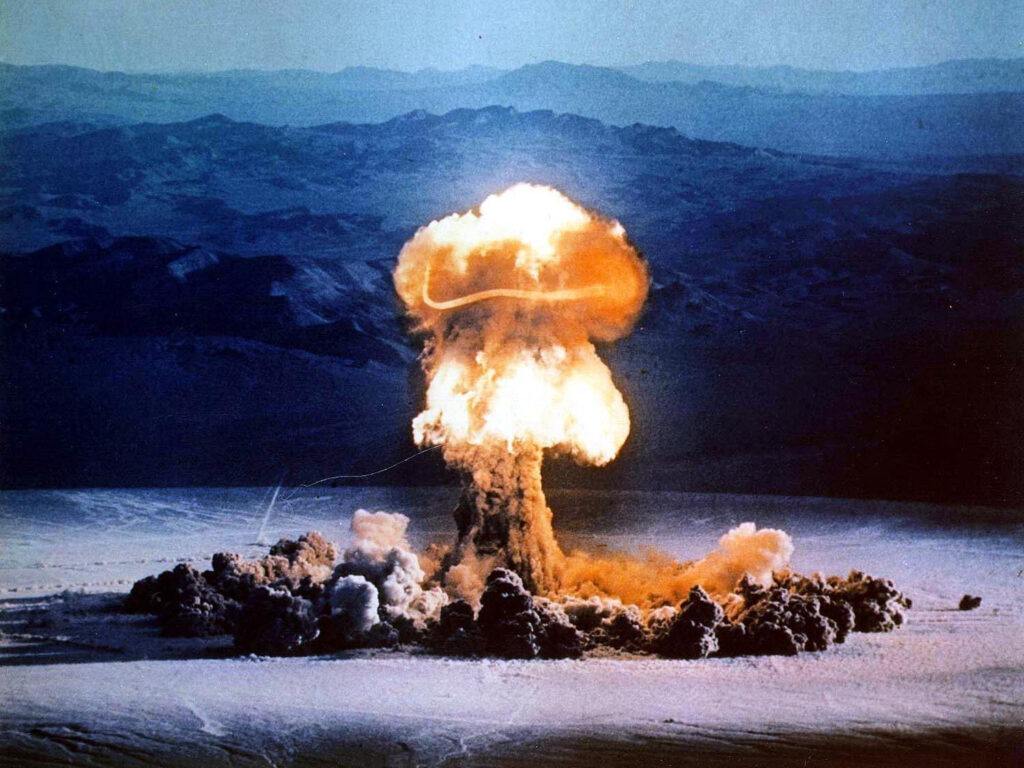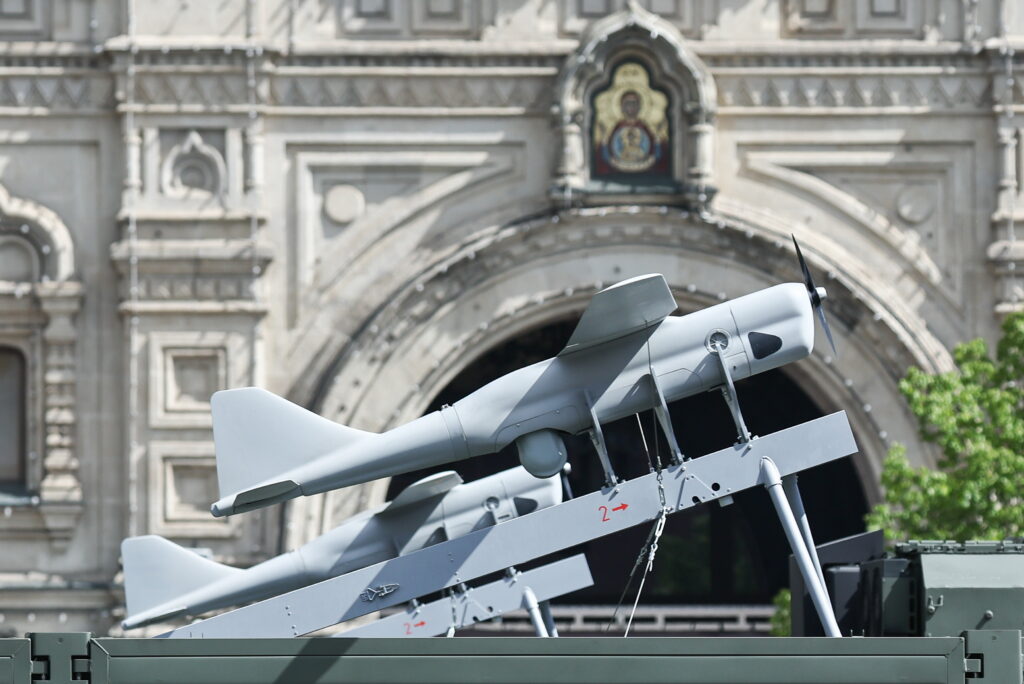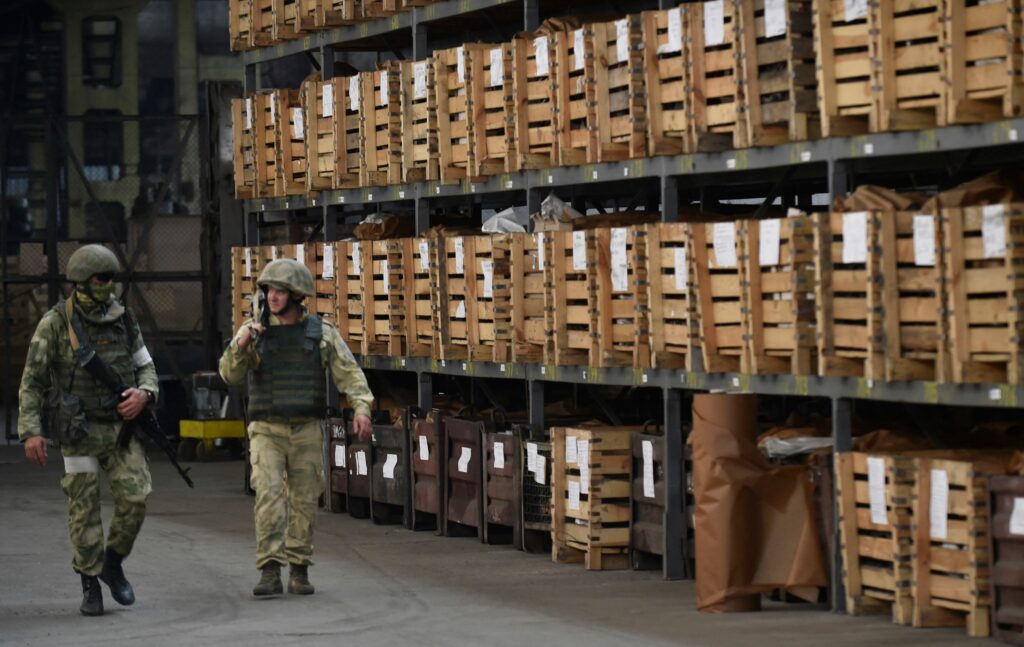The Russian Military-industrial Complex (OPK) is a vast and multifaceted component of the Russian economy. It is the direct legacy of the Soviet (A) economic group tasked with developing weapons that could fight and win a conventional war with any peer power. The OPK consists not only of arms manufacturers but numerous companies that provide primary and secondary inputs to weapons systems. Russia’s OPK comprises an estimated 6,000 companies and employs close to 3.5 million people while amounting to 7.5% of Russia’s total GDP. Since 2014 it has increasingly devolved, while able to continue to deliver and even increase production output. The systems it can reliably produce have become more primitive, and in doing so have cast serious doubts on the ability of the Russian military to go toe to toe with a peer competitor and engage them effectively in conventional conflict. Putting aside the loss in quality of the Russian military there is serious doubt the OPK which once competed effectively with top Western Defense manufactures will be able to recover its ability to produce effective high-tech weapons or support a military built around rapid maneuver warfare.
Russia’s OPK has experienced bouts of underinvestment and flawed reform efforts for years. Initially hobbled by the end of the Soviet Union and the economic collapse of the 1990s, it underwent some reform in the wake of two wars against separatist Chechnya. Additional reforms and increased investment followed the Russian military underperformed in the conflict with Georgia in 2008. The Russian government redoubled its efforts to overhaul its legacy military, which was still a hodgepodge of Soviet-era conscription and professional forces, into a smaller, more agile, and more capable force. This included sourcing components from abroad, establishing foreign partnerships, and overhauling the OPK to design new generations of weapons.
These grand ambitions to modernize Russia’s military ultimately ran afoul of the limits of the Russian economy but were also severely impacted by the international sanctions that were put in place after Russia’s illegal annexation of Crimea in 2014. Although the OPK continued to supply the Russian military with some upgrades, it started to experience an overall decline in quality of its output, as many of the key inputs for its production relied on foreign sourcing.
Russia’s ambitions to develop new modern systems are rendered increasingly out of reach. In order to overcome the sanctions blockade Russia has had to become increasingly reliant on re-exports from third countries. However, the origin point of most of the critical components are Western companies in the United States, Japan, Taiwan and Europe who nominally adhere to the sanction regime. This makes the new logistical supply lines of the OPK extremely vulnerable to aggressive interdiction and disruption by Western governments. Asymmetric or black-market logistics trains can be extremely costly to set up as often multiple intermediaries are needed for sourcing parts and enabling payment. Systems can be seized in transit or simply canceled at the last minute without any recourse. Additionally, Ukraine is actively working to identify those whose components are inadvertently supplying Russia and encourage them to tighten their export controls. Which makes logistic trains always unreliable and risky further increasing cost and diminishing reliability.
While the OPK’s capacity to produce modern weapons has severely degraded, its total output has increased through a shift in production of higher quantities of less sophisticated munitions. Russia has also had great success in retrofitting older weapons—the most devastating example being the glide bombs that Russian aircraft can launch from a safe distance. Many the systems Russia currently relies on, such as the KN-23 ballistic missile and Shahed UAV, were not developed by Russia but North Korea and Iran, respectively. Russia has successfully transitioned to an arsenal of weapon systems that can be manufactured and procured under conditions of extreme sanctions.
Yet even as Russia’s production and imports ramps up, on the front its military is increasingly focused on supporting a doctrine of static trench warfare, rather than modern maneuver warfare. The OPK has devolved along with the Russian military: both are now reliant on munitions for mass fire rather than effective fire.
Sanctions Success
Between 2021 and 2024 Russian arms sales, once one of the largest export sectors of the Russian economy, dropped 92%–equating to a loss of over $ 13 billion in sales. The loss of these export revenues deprived the OPK of an important source of hard currency and funding for research and development. The collapse in international sales has also led the industry to abdicate its place as a player in the global arms market, further depriving it of its ability to resume its role in the market when the conflict ends. Even if the war in Ukraine ends tomorrow and sanctions on Russia are lifted, the OPK will not be able to recapture its place in the international arms market at least for several years.
Russian forces have lost thousands of pieces of equipment ranging from battle tanks to guided missile cruiser Moskva. Systems like tanks, APCs, and artillery can be replaced with refurbished relics from the vast stockpiles of the Soviet Union. What is more difficult to replace are lost aircraft, missile systems, and other sophisticated pieces of technology. Also destroyed: elite Russian combat troops. As a result, the Russia’s pre-war army, designed to fight a NATO adversary, is essentally gone. What remains is a Russian army adapted for trench warfare and slow gradual advances against a much smaller opponent. This change in doctrine is a logical adaptation in response to the loss of trained personnel, sophisticated equipment, and the inability of the OPK to replace either at scale. The manufacturing of ‘dumb’ weapon systems such as artillery shells and refurbishment of tanks has been scaled up, but only to a point. Russia has had to purchase munitions from other nations most notably North Korea, RUSI estimates Russia has had to purchase between 4.2 and 5.8 million munitions from North Korea to stave off shell hunger, and as of 2025 its stockpiles of tanks are beginning to be exhausted.
Despite its best efforts Russia has consistently lacked key components the OPK. Shortages include CNC machines, industrial lubricants, and microelectronics. Shortages not only reduce production amounts, but the usage of items reduced or refurbished. For example, many refurbished tanks are more suitable for indirect fire support rather than their intended purpose of mobile armored assault. And while the total supply of the Shahed drones is gradually on the rise, as increased Russian domestic production supplements Iranian supplies, the impact of these weapons is trending down. According to the Institute of Science and International Security, from August 1, 2,024, to March 1, 2025 Russia launched 15,011 Shahed drones—with 454 recorded as hitting their target. This gives the Shahed an effective hit rate of 3%. While Russia is indeed producing and refurbishing weapons at a higher rate, those weapons effectively limit Russian battlefield doctrine to mass fire tactics of limited effectiveness, limiting the Russian military to incremental advances.
Sanctions Failure
Russia’s use of dual-use technology has proven crucial to its success in building surprisingly resilient supply chains for its military production. Ukraine and Western intelligence and open sources have both provided extensive data on Russian efforts to obtain critical supplies and components. Many of these supplies continue to originate in the West—for example, machine tools from Germany and microchips from the U.S., Europe, and Asia. Prevented from directly importing these components, Russia has establshed a network of third-country companies established to evade sanctions. Russia’s Industrial Technologies Group (Promtekh) is a key figure in this network, but it is only one of hundreds of entities and individuals from Russia, Turkey, Kazakhstan, China, and India working to provide Russia with a steady supply of critical components to keep Russia’s war machine running. This trade was enabled by the interconnectivity of global trade combine with the proliferation of dual use technology and a rather lackidasical attitued of most international firms in ensuring the end point of their product does not violate international sanctions. There is also a somewhat lackadaisical attitude non-Western countries have taken towards rigid sanctions enforcement. Even as entities are sanctioned, new ones can be created and new gaps and loopholes in sanctions enforcement found.
For example, in December 2022 a Turkish company called Enütek was discovered reexporting CNC machines to Russia. Enütek was alleged to have acted as a front for Promtekh and moved millions of dollars’ worth of goods before it was identified and sanctioned. Shell companies like Enütek are useful for circumnavigating sanctions because they deal in dual use technologies and goods, many with a wide variety of manufacturing purposes, that are perfectly legal to buy and sell among non-sanctioned nations. It is easy to set up corporate entities in a third countries, especially those with traditional trading ties with Russia, that can place orders with Western suppliers and arrange reexport to Russia with companies or middlemen controlled by Russian OPK firms. Russia funds these networks through oil export revenues and its sovereign wealth fund. It often executes the trades with cryptocurrency not subject to Western financial sanctions.
Part of the issue with trying to counter act sanctions is that it is not only the Russian state that needs to be combated, but the fundamental laws of supply and demand Russia has a demand for components and despite everything is producing more war materials, thus it will use its resources to identify supplies even if the cost are high and supply inefficient. The Russian state heavily subsidizes its OPK through procurement contracts and subsidized loans. This creates a demand which to business interests in nations with long established grey market activity looks like an excellent opportunity. Nations where this has been recorded include India, China, Turkey, Belarus, and several Central Asian states. In the case of India, Russia actively invested in developing manufacturing capability to facilitate export to Kyrgyzstan then re-export to Russia.
Despite Russian resilience finding critical supplies, its options have narrowed in terms of what supplies it can procure. Finding widely available electronic components suitable for drone production is relatively simple. Sustaining the production of conventional artillery munitions requires harder to source inputs. While India, Turkey, and Central Asia have furnished Russia with dual use components, it is Chinese firms that are providing 80−90% of Russia’s critical industrial inputs including industrial lubricants and CNC machines. There are not many of them: two Chinese firms provide most of the imported lubricants and 13 Chinese firms have been identified as providing CNC machines.
Likely Outlook of OPK over the coming Years
Russia’s OPK delivered a significantly large increase in its output since the start of the invasion in 2022. This increase has required massive state expenditures and relied on vast Soviet-era stocks of munitions and equipment. The ability of the OPK to sustain this resilience and continue to expand its output in the coming years is questionable. The OPK’s success in upgrading old, dumb systems has both compensated and replaced its capacity for delivering modern sophisticated systems at scale. The combination of international sanctions and significant brain drain of talented young workers renders Russian’s ability to develop new systems nearly impossible.
While the Russian military on the battlefield in Ukraine can be supplied by OPK for some time, the long-term outlook for Russian military performance is not necessarily in Russia’s favor. Russian generals have responded to the rapid depletion of armor, naval, and air assets by embracing mass fire tactics and human wave assaults. Ukraine has striven to keep up as much as it can with Russia in terms of conventional munitions, but has also effectively used drones and autonomous systems as force equalizers. Ukrainian prowess and resolve, bolstered with Western support and intelligence, have greatly limited Russia’s strategic advantages and room to maneuver.
Additionally, the conflict has made Russia increasingly dependent on the goodwill of its neighbors, especially China. The Chinese state has always been unwilling to commit itself to the conflict in Ukraine as the war is contrary to China’s long term strategic objective of increased economic integration with Europe facilitated by its growing trade networks in Eurasia. At the same time China has not aggressively sought to limit trade of dual use or industrial systems with Russia, but its own business have shown a reluctance to engage when it threatens their broader global standing. Although this reluctance can be countered it none the less drives up the overall price of Russia’s trade with China and keeps inputs expensive and uncertain, which precludes effective long term industrial policy.
The day after Russia’s war in Ukraine ends, its OPK will emerge as a pillar of the Russian economy. Yet its technological prowess and global market share will face a long period of recovery. Russian plans for post-war military restoration and rearmament will immediately fact the grim reality its OPK faces to reorient production priorities back to sophisticated systems—even if the sanction regime is lifted. Sanctions, especially legislative sanctions, are very stubborn things. Given Russia’s past aggression and current intransigence toward Ukraine, it does not seem likely that Russia will be out from them completely even after the end of the war. Consequently, Russia faces a steep economic as well as military recovery.
Meanwhile, post-war Ukraine appears poised, with European support, to bolster its own defense industry and potentially rebuild its military far more rapidly and effectively than Russia can. While this is of course speculative, the data does suggest that the macro trends for Russia are not in its favor.
Conclusion
Sanctions have not and will not stop Russia’s OPK from supplying and sustaining Russia’s war in Ukraine. What they have done, and will continue to do, is degrade the OPK’s ability to produce modern weapons systems. OPK shift towards mass fire tactics, retrofitted dumb munitions, and the refurbishment of existing weapons stocks rather than the production of more modern and precise systems are all a direct result of the sanctions regime. Instead, the OPK turned to and continues to rely on asymmetric sourcing through third party reexports of vital components. Western interest to support Ukraine and maximize the amount of damage inflicted upon OPK through the expansion, aggressive application of the sanctions regime.
